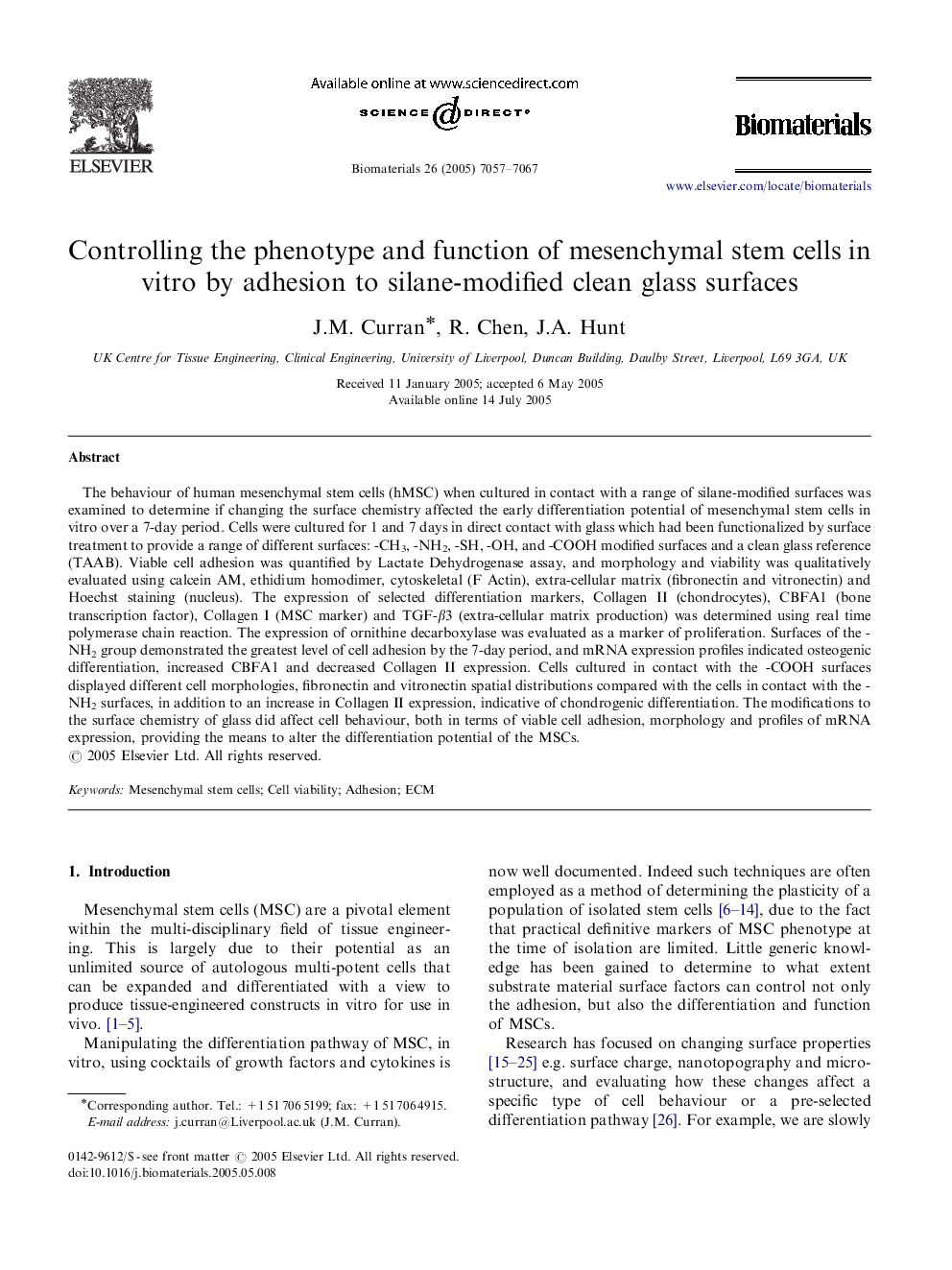| کد مقاله | کد نشریه | سال انتشار | مقاله انگلیسی | نسخه تمام متن |
|---|---|---|---|---|
| 12463 | 793 | 2005 | 11 صفحه PDF | دانلود رایگان |

The behaviour of human mesenchymal stem cells (hMSC) when cultured in contact with a range of silane-modified surfaces was examined to determine if changing the surface chemistry affected the early differentiation potential of mesenchymal stem cells in vitro over a 7-day period. Cells were cultured for 1 and 7 days in direct contact with glass which had been functionalized by surface treatment to provide a range of different surfaces: -CH3, -NH2, -SH, -OH, and -COOH modified surfaces and a clean glass reference (TAAB). Viable cell adhesion was quantified by Lactate Dehydrogenase assay, and morphology and viability was qualitatively evaluated using calcein AM, ethidium homodimer, cytoskeletal (F Actin), extra-cellular matrix (fibronectin and vitronectin) and Hoechst staining (nucleus). The expression of selected differentiation markers, Collagen II (chondrocytes), CBFA1 (bone transcription factor), Collagen I (MSC marker) and TGF-β3 (extra-cellular matrix production) was determined using real time polymerase chain reaction. The expression of ornithine decarboxylase was evaluated as a marker of proliferation. Surfaces of the -NH2 group demonstrated the greatest level of cell adhesion by the 7-day period, and mRNA expression profiles indicated osteogenic differentiation, increased CBFA1 and decreased Collagen II expression. Cells cultured in contact with the -COOH surfaces displayed different cell morphologies, fibronectin and vitronectin spatial distributions compared with the cells in contact with the -NH2 surfaces, in addition to an increase in Collagen II expression, indicative of chondrogenic differentiation. The modifications to the surface chemistry of glass did affect cell behaviour, both in terms of viable cell adhesion, morphology and profiles of mRNA expression, providing the means to alter the differentiation potential of the MSCs.
Journal: Biomaterials - Volume 26, Issue 34, December 2005, Pages 7057–7067